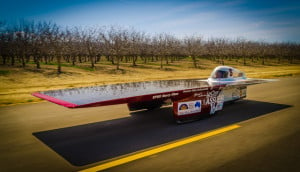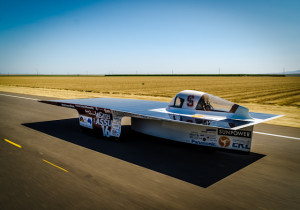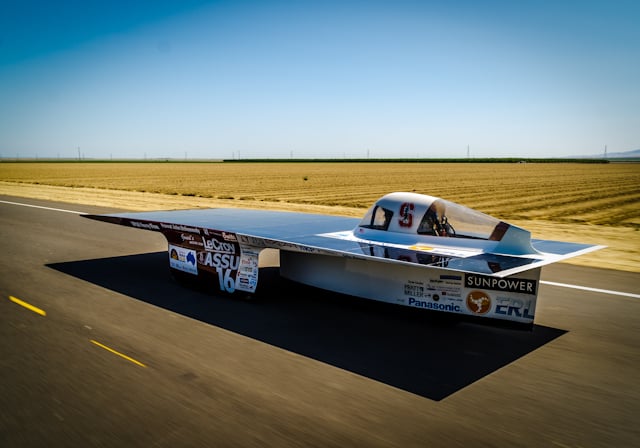The Stanford Solar Car team is recognized as one of the best in the world, though where they work remains a mystery to many.
Based in the Volkswagen Automotive Innovation Lab, a small building on the outskirts of West Campus, the team competes internationally in the World Solar Challenge, a race of high-efficiency solar-powered vehicles across 3,000 km of thunderstorms and brushfires in the Australian outback. In 2011, the team’s design, a car called Xenith, placed 11th overall against 40 other competitors representing universities around the world.

“One of the biggest successes of Xenith was our solar array,” said Theodore Wesley Ford ’13, Solar Car’s team lead. Xenith, the name of the team’s car, had a tremendous power output, thanks to world record-holding solar cell capabilities and innovations like glass encapsulant. In fact, after the race, the team took a sample of their solar cells to the National Renewal Energy Lab in Denver for some independent testing and verified that their panels rivaled, if not bested, industry-standard panels.
However, the integration of new innovative technology into the car led to a significant downside: problems with the vehicle’s operation during the race. According to Ford, the team will now plan to design for reliability.
“We want to maintain our innovative edge, bringing the best technologies in solar car racing while building a vehicle robust enough to hold up to racing conditions in the Aussie outback,” he said.
The team races a brand-new car every two years and chooses to design cars from ground up in order to bring the best technologies of the year into the vehicle. With a tight schedule for designing, manufacturing and testing the vehicle, it’s a challenge for the team members – all volunteers – to balance their academic and social lives.
“That’s what makes the project exciting,” Ford said. “Not many student groups, or even research groups, on campus get to build a full-sized vehicle. It’s a huge endeavor.”
Despite all the achievements and accolades heaped on the team, people of all backgrounds and majors are encouraged to work on projects in the vehicle lab.
“On my first day [in the lab], I came in and built a hinge mount for [software company] Apogee,” said Daniel Posch ’13, a longtime Stanford Solar Car team member.
This freedom to work independently doesn’t mean the team has no structure. From a group of dozens of students, subteams are organized in such a way so that each one designs and manufactures a specific part of the car’s complex structure, like lines of code from the “top-down” programming methods taught in even the most introductory computer science classes at Stanford.
But the completion of the car requires more than just brains, hard work and solar power. Running Xenith in the World Solar Car challenge costs $500,000 – money the team must raise in order to give the championship another shot.

“We get most of our funding through special fees from ASSU, which is really helpful,” explained team member Carole Ann Bradley ’13. “Basically we reach out to companies who we think would be a great match to us. We fundraise mainly through outreach and reach out personally to sponsors.”
She added that the team’s completed cars also travel around the world, sometimes attending major sponsors’ corporate events.
But no matter the team’s success, Bradley emphasizes the team still runs off inclusiveness and learning through mistakes.
“It’s super accessible,” she said. “Solar Car is where you can learn more about yourself too. It’s less of a pet project for someone…and more like where you figure out where you fit in place on the team and what you think is best.”
